Bombed, neglected and resurrected: the story of Mile End Park
Opening in 1999, Mile End Park is a linear stretch of green that starts at Roman Road and runs southwards like a ribbon alongside Regent’s Canal, crossing over bustling Mile End Road and ending at the Limehouse basin.
Along the way it includes a surprising number of facilities: a skate park, a climbing centre, an arts venue and an Ecology Pavilion, and that’s only mentioning a few. This is an East End park which truly has something for everyone.
Strolling through its 32 hectares of winding paths and glades overlooking the slow-moving water of Regent’s Canal, it’s astonishing to think this site was, until recently, a derelict stretch of land left largely untended since the aftermath of the Blitz.
During World War II, Regent’s Canal was used very differently than it is today. Canal boats carried ammunition during the War and prior to that, in the 19th century, they were used for transporting horse feed, exporting manure and even moving gunpowder from the Enfield Rifle Factory – a far cry from the idle house boats that lounge on its waters today.
The canal-side location meant this land was targeted heavily during the bombing of WWII as Germans endeavoured to destroy vital transport links and munitions stores. Tower Hamlets, then the industrial heart of London, suffered more damage than any other borough, particularly the land which is now Mile End Park.
The Cook family recalls what it was like living in Mile End during this time. Arthur Cook ‘was involved in collecting incendiary devices during the night raids and going straight to work the next morning. He collected the incendiaries in a bucket full of sand and then dumped them in Regent’s Canal.’
It is estimated that around 54 bombs were dropped throughout WWII in Mile End alone. On June 13th, 1944, however, a new, deadly weapon was introduced to Germany’s attack.
Wennington Green
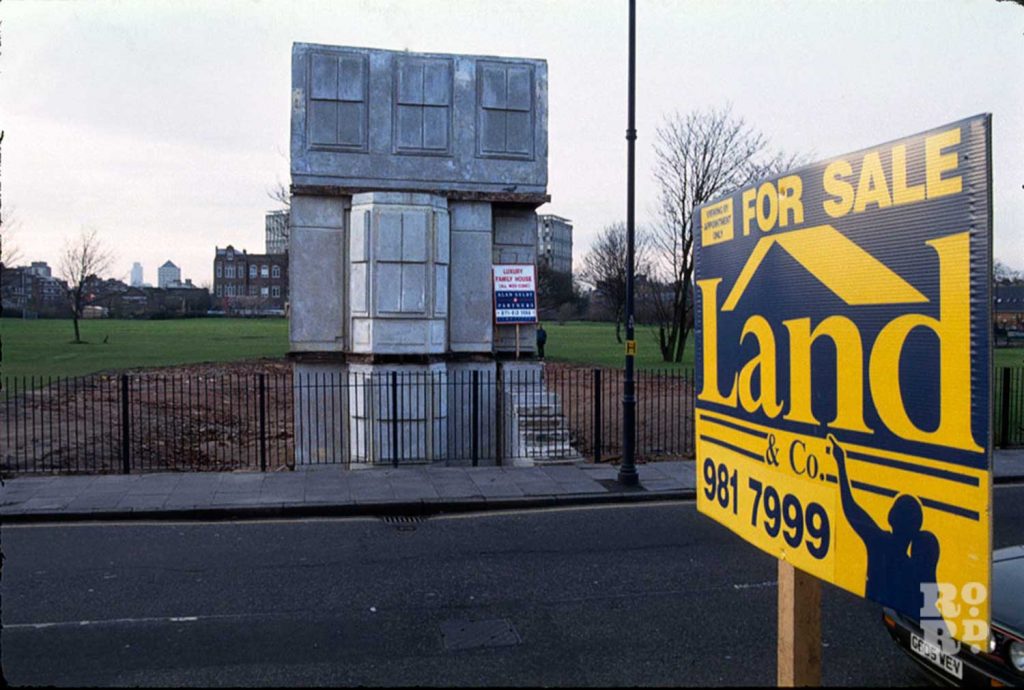
At the most northerly tip of Mile End Park, on the corner of Grove Road and Roman Road, lies Wennington Green.
Nowadays, this tree-lined patch encourages alfresco exercise for adults and children, facilitated by a playground as well as the playfully painted, Olympic-funded adiZone outdoor gym, which rests inside a grass mound – a signature architectural feature you’ll find across the park.
Next to the playground and just South of Hertford Canal is the old glue factory turned pub East London Liquor Company in Bow Wharf.
But what’s the concrete house in the photo above? Wennington Green possesses a surprising political history, ignited by an unassuming sculpture.
In 1993, Artist Rachel Whiteread approached Tower Hamlets Council with her idea to turn a disused property, one of the space’s last remaining, into a work of art.
Whiteread built her sculpture by using the physical house as a mould, making a cast from the interior by spraying a skin of liquid concrete around a metal armature constructed to support the weight of the work.
However, by the time the bricks were removed and the sculpture was exposed, Councillor Flounders, Chair of Bow Parks Board, denounced it as ‘excrescent.’ It was considered so politically controversial that it was pulled down just 80 days after it was unveiled.
All there is left of the house are a few half buried bricks indicating where the foundations once lay.
Blue Plaque: first Doodlebug bomb
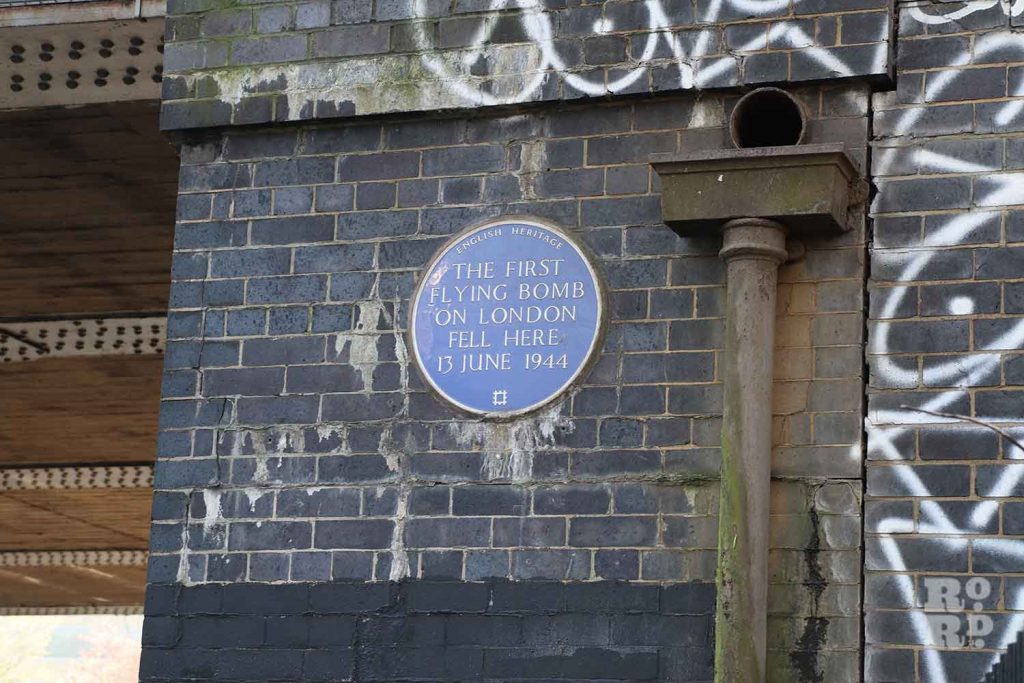
A little further down from Wennington Green, on Grove Road, you’ll find an important site of local heritage.
The ‘doodlebug’, contrary to its misleadingly harmless name, was the first V-1 flying bomb to strike London in the Blitz; and it landed on Grove Road destroying the railway bridge and nearby housing. Six people died, 30 were injured and 200 made homeless; this tragic event is now commemorated with a blue plaque on the rebuilt bridge. Sir Ian McKellen paid his tributes to the site in 2016, stating in interviews that ‘it’s important for the recent generations to realise the disaster of the bombing in this area.’
Following violent bombing, the land surrounding Regent’s Canal was devastated. The area was left derelict until plans began to renovate it in the 1950s – the idea of creating Mile End Park was born. This wasn’t to be realised until nearly 50 years later with the financial help from lottery money and the Environment Trust.
Surprisingly, one property was left standing after the catastrophic V-1 bombing incident of that June day in 1944. Carl Boedecker, 62, owned this four-bedroom Victorian house for 22 years before putting it on the market in 2016 for £1.25 million.
When interviewed, Boedecker explained his fondness for the property, ‘the home has a real history to it…it was one of the main attractions which drew me to the place as well as the Mile End Ecology Pavilion at the back of the house.’
Ecology Pavilion
off Haverfield Rd, Grove Rd, Mile End, E3 5TW
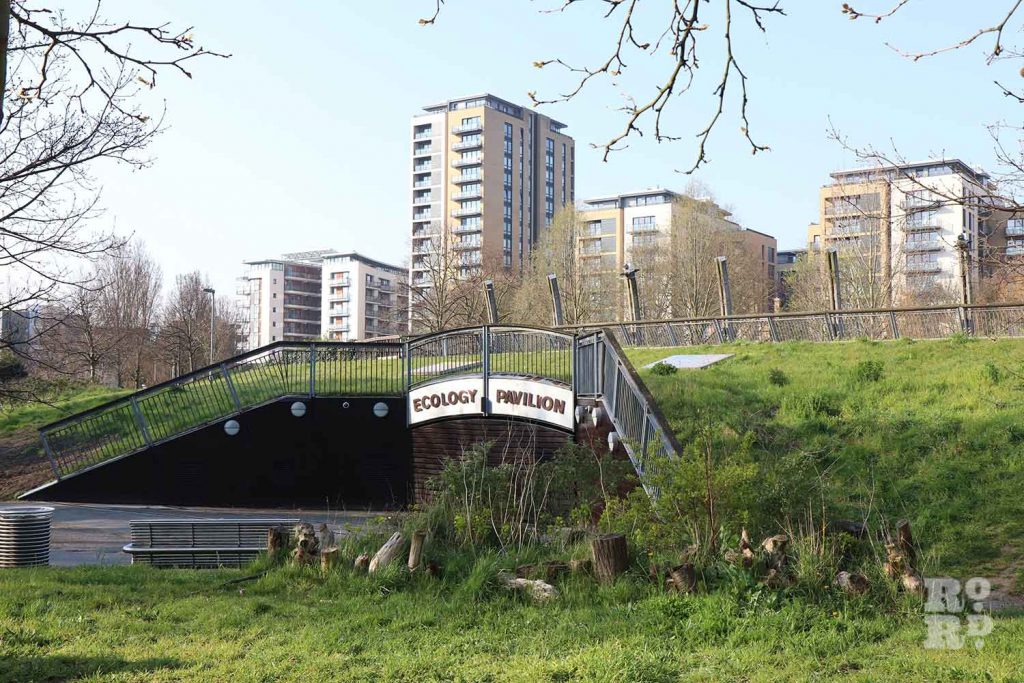
The Ecology Pavilion’s peaceful ponds and languid reeds, along with the rest of Mile End Park, tell a very different story to its past of rack and ruin.
This contemporary building is nestled amongst quaint lakes and swaying bushes towards the Roman Road side of Mile End park. Wooden decking cuts through a green-covered pond, fittingly called ‘Lovely Lake’, to provide a calming walkway leading up to the glass-fronted Ecology Pavilion, a space that can be rented out for anything from weddings to exhibitions.
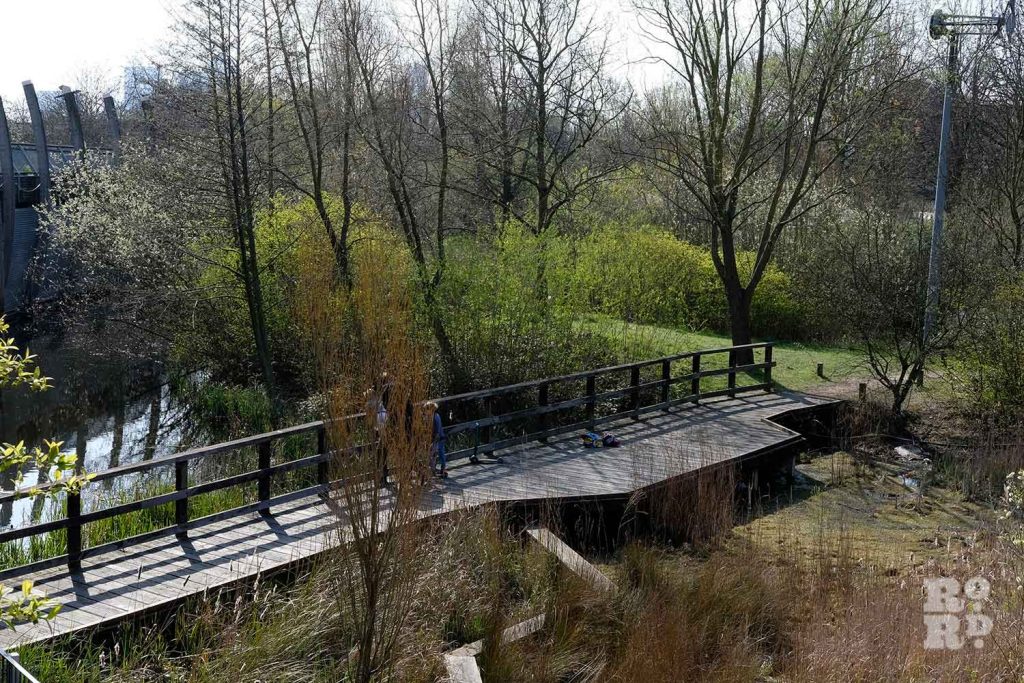
The space attracts a wide variety of wildlife to the park. It is home to water birds, amphibians, dragon and damselflies, as well as some spookier-looking creatures.
Spider expert Edward Milner found a new species of spider in the park in 2013; it had never been seen in London before. Milner encountered a tiny money spider, which doesn’t have an English name, known as ‘Mermessus trilobatus’. In fact, Mile End Park has a history of producing rare spiders, with two new species to Britain found in 2002 and 2011: the jumping and the buzzing spider.
Sitting in splendid isolation, and just a stone’s throw away from the Eco Pavilion, is the Palm Tree pub offering thirsty walkers, and spider-seekers, a refreshing pint overlooking Regent’s Canal.
Haverfield Green and the Mile End Climbing Wall
Haverfield Rd, E3 5BE
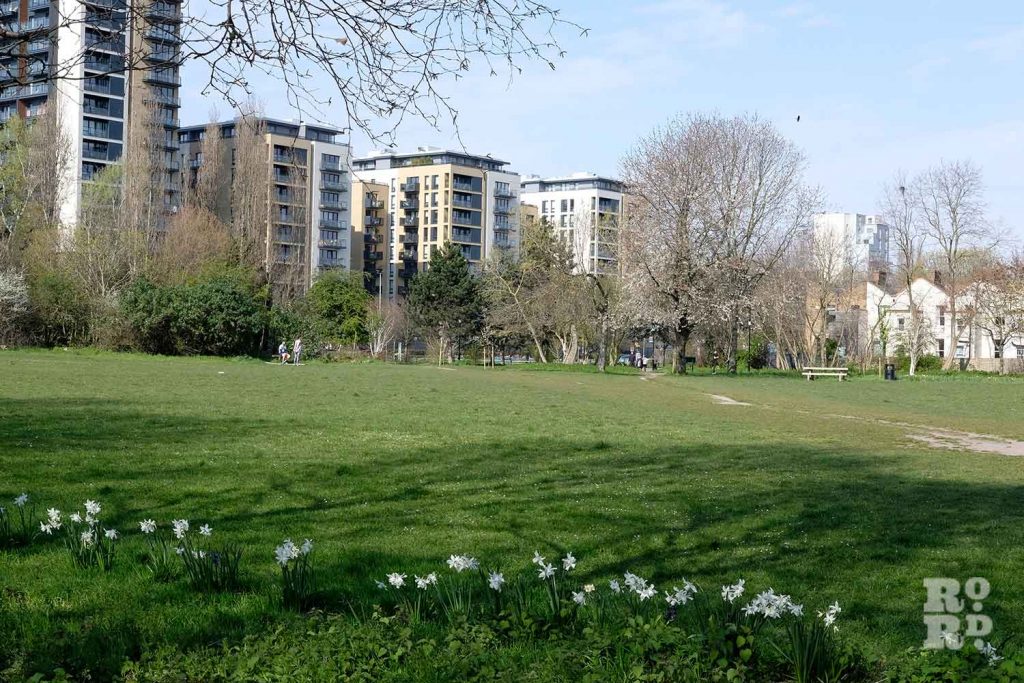
A few strides down from The Palm Tree and the land opens out into Haverfield Green, a large green space surrounded by a forested trail. You will often find the horses from Bow Police Stables being exercised here.
Just behind Haverfield Green, bordering the canal, is Mile End Climbing Wall. This unassuming building, tucked away under Roman Road Bridge, is one of the most established and oldest dedicated climbing walls in the country; a fact evidenced by how busy the centre is. A week night sees its walls filled with local residents and Queen Mary’s students alike.
The space contains five different rooms, featuring a mixture of bouldering walls and roped climbing with some wonderfully unique features. The traversing room has climbers clinging on to an old stone wall, which has remained there since its opening in 1989.
Another room, the ‘Monkey House’, has boulder problems covering the ceiling, positioning climbers horizontal to the floor for the ultimate challenge. They also offer a variety of classes such as ‘Yoga for Climbers’ and training courses for children.
The Arts Pavilion
Clinton Rd, Mile End, E3 4QY
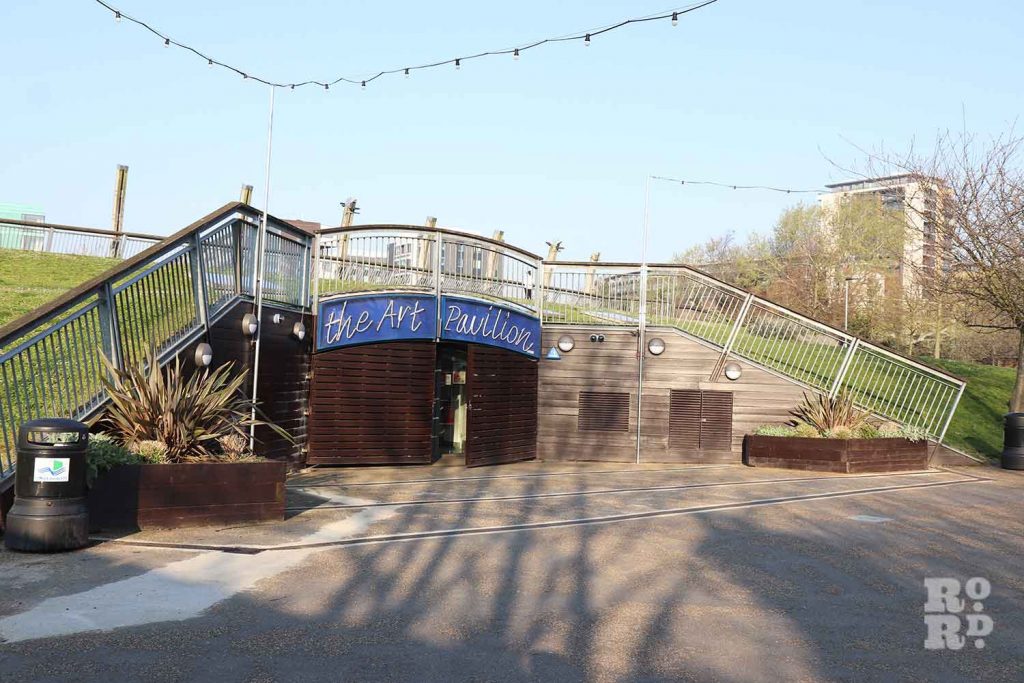
A bit further into Mile End Park stands the Arts Pavilion, the Ecology Pavilion’s creative cousin. It offers a gallery space with a natural twist; buried in a grass bank, this stunning venue overlooks a small lake, lush foliage and is well lit by its huge glass walls.
The space can be rented for exhibitions and installations and offers guests a calming room with a view to enjoy art, music and design amongst nature’s beauty.
In front of the pavilion is the Arts Lake, lined by wooden decking that creates a sharp contrast from the still water beneath. In the middle, you can spot a snoozing swan, whose made a large nest out of reeds.
Further south is a small hillock known as the Art Mound, whose summit is reachable by oversized grass-covered stairs. At the top, expect sweeping views across the park. Dotted on the mound are white and orange globular statues, adding to the atmosphere of a Telly Tubby-like land. In the background, Queen Mary’s modern high-rise accommodation looms magnificently from the other side of the canal.
Piers Gough’s Green Bridge
The Green Bridge, Mile End, E3 4PL
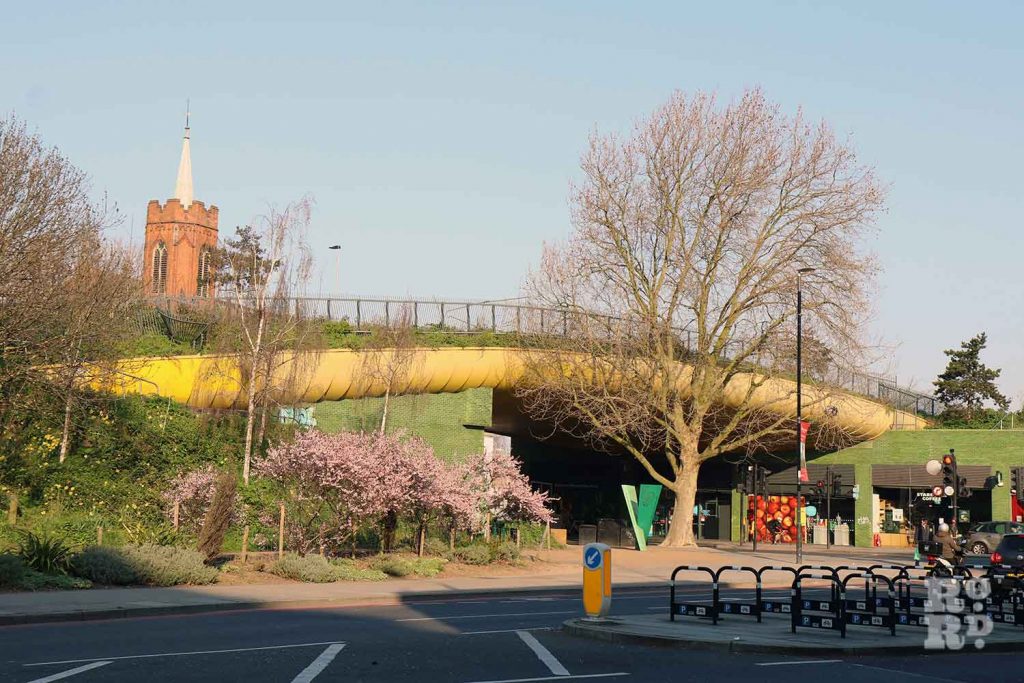
Officially the Green Bridge, many know this as the yellow bridge. This award-winning, pedestrian-only bridge runs across Mile End Road right at the junction with Mile End Station.
Long before New York’s High Line, the East End was one of the first places to conceive of building a park on top of a bridge. Its 24-metre-wide path is bordered by lush green flora to provide a buffer from the rushing traffic below.
It was designed by Piers Gough, a local architect, to join together the two halves of Mile End Park and allow the public to safely cross from one side to the other, away from the busy road. After 18 months of construction, it was officially opened in June, 2000, and offers walkers panoramic views of Canary Wharf to the south.
Paola Sassi mentions the Green Bridge in her book Strategies for Sustainable Architecture. ‘By bringing life to a neglected environment, the bridge and the park have proved to be environmentally, socially and economically sustainable’.
Did you know that the trees planted on top of the bridge will one day reach 60-feet high?
Mile End Leisure Centre and Stadium
190 Burdett Rd, Mile End, E3 4HL

Crossing over Mile End road into the park’s second section you’ll find the Mile End Leisure Centre and Stadium. Opened in 2006, it is one of Tower Hamlets’s best sporting facilities and was used by teams practising for the 2012 Olympics.
It holds a gym, 10 sports courses including hockey pitches and tennis courts, an athletics track available to hire, a sports hall and two swimming pools, including a Tom Daley Diving Academy. Oh, it’s also home to a 650-metre outdoor karting track as well.
Ragged School Museum
46-50 Copperfield Rd, E3 4RR
Just opposite the stadium, on the outskirts of Mile End Park sits an important local heritage site – the Ragged School Museum. Just looking at this three-storey, industrial brick building, is enough to take you back to the Victorian era.
Philanthropist Thomas Barnardo came to the East End during the cholera outbreak of 1866. He was saddened by the poverty, overcrowding and lack of education for the poor so gave up his medical training to open his first Ragged School on Copperfield Road in 1867, which remained the largest of its kind across London until it closed in 1908.
This school educated the East End’s poorest for free for over 30 years. Since its closure it has been used in a variety of different ways before being turned into a museum in 1990. The museum dives into the entire history of London’s Ragged Schools and highlights the social conditions of Victorian Britain in the East End.
Skate Park
St Paul’s Way, Mile End, E3 4AG
Just past the Leisure Centre, on the fringes of Mile End Park and St Paul’s Way, lies a skate park. Opened in 2011, it is considered the focal point of East London’s skating scene.
The area contains a ‘street section’, which is largely flat, and a challenging 8-ft-deep ‘bowl’ as well as an inside section with mini ramps under train arches that can be used when it’s raining.
You may recognise the skate park for another reason though. Olly Murs and Rizzle Kicks filmed a music video here for their song ‘Heart Skips a Beat’, when the skate park first opened.
Mile End Park has risen up from the ashes of the Blitz. Shedding its Victorian industrial heritage, it is now one of the quirkiest parks in London offering visitors unexpected surprises, from undiscovered spider species, to street sports and earth-sheltered buildings. Mile End Park is an understated gem on the neighbourhood’s green circuit.
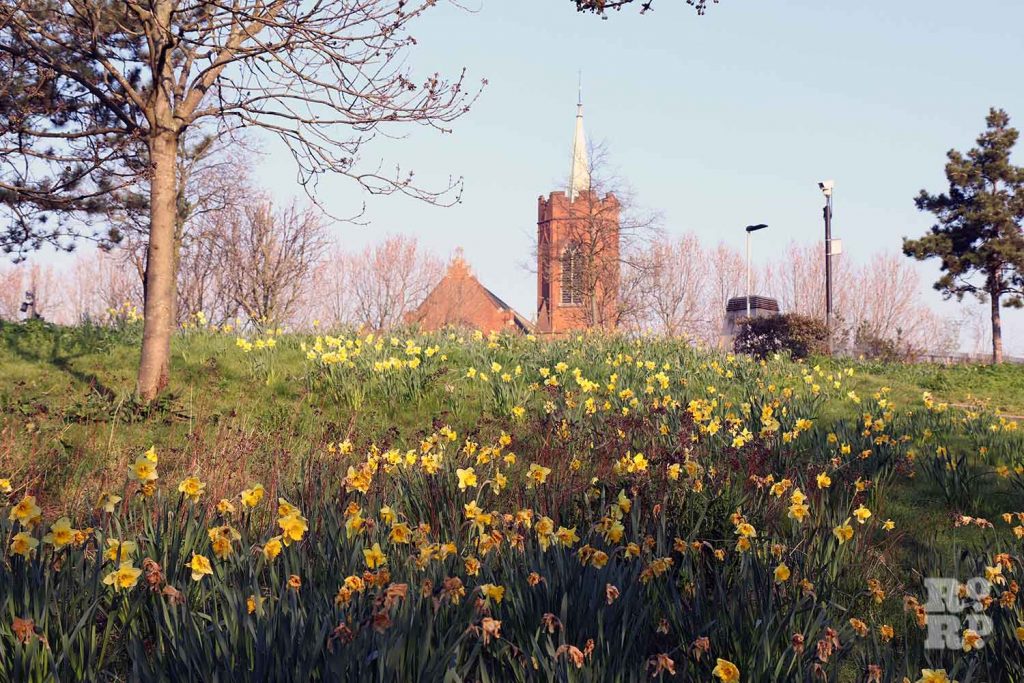
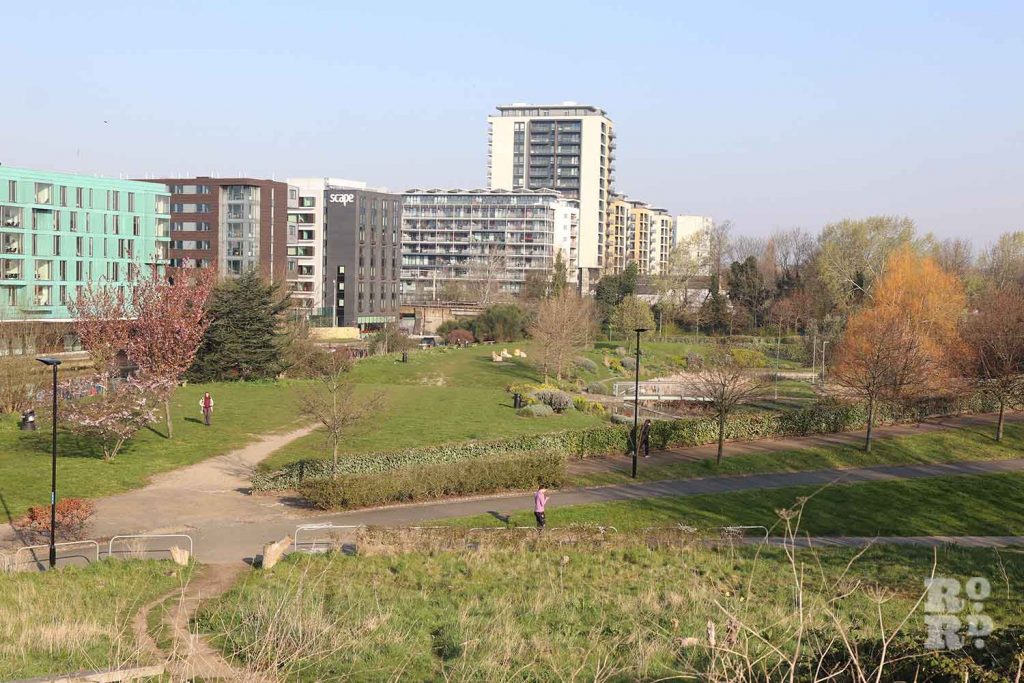
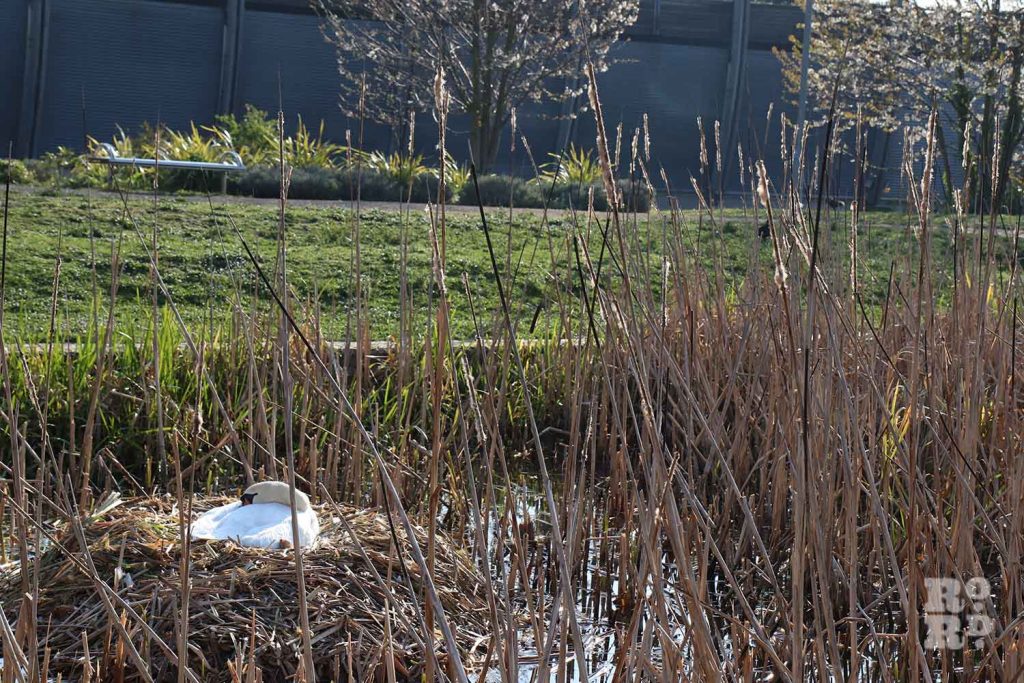
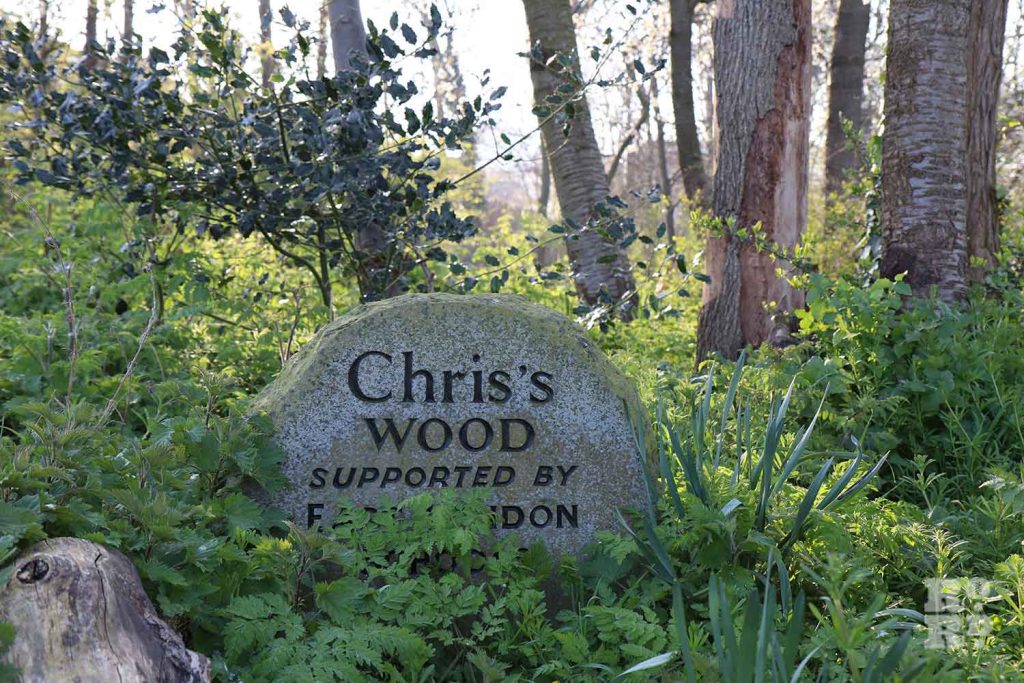
Hankering after some more mother nature? Read up about the history of Victoria Park.

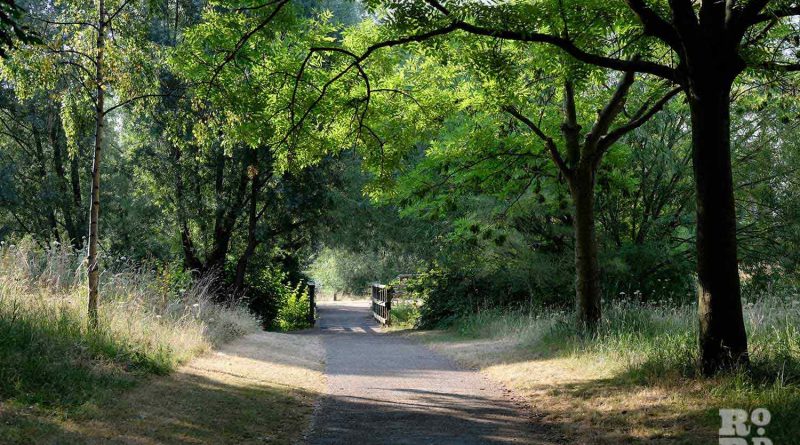

Blur played a near mythical gig during the ‘Park Life’ period at Mile End Stadium. I was there so it wasn’t mythical but it did rain for most of the day.
Great article – one tiny point – Mile End Leisure Centre opened in 2006, rather than 1990 as the article states – it must be just the Stadium that opened then. I moved to the area in 2005 & the Leisure Centre was still being built then.
I lived on Ewing Street, in a happy family home with my parents, two sisters and our maternal Grandmother. The street was compulsory purchased as “slum clearance” although they were no slums with the houses similar to those in the Tredegar Square conservation area. The L.C.C. would rehouse either the family, or our Nan but not both. We rented so the Compulsory purchase pittance didn’t come to us.
Next time you walk through the park extolling how wonderful it is, think of those who lost their homes for it.
My Grandfather set up Charles Owen & CO Bow Ltd in 1911 on 34-36, Coutts road off Burdett Road. It manufactured protective headwear. The factorywas moved in 1958 by my father, I presume to set up the idea of the Mile End Park. I vaguely remember going there as a small child. The factory is now located in Wrexham NOrth Wales still making helmets and is in the fourth generation of our family. If anyone has any photos of Coutts Road I would be interested to see them. Thank you.